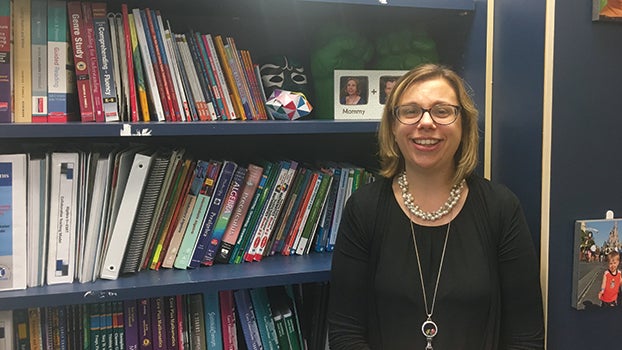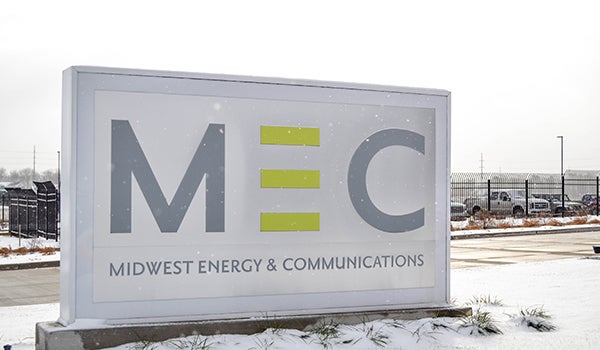Niles schools awarded grant for STEM testing kits
Published 9:26 am Friday, July 19, 2019

- Ann Bingham, director of curriculum, instruction and assessment at Niles Community Schools poses for a picture in front of her office bookcase. Bingham and her grant-writing team were the recipients of a Niles Education Foundation matching grant, which funds programming for high-achieving elementary students. (Leader photo/BEAU BROCKETT JR.)
NILES — Kindergarten through fifth-grade students of Niles Community Schools this fall will be able to take part in programming meant to encourage critical thinking and exploration in science, technology, engineering and math.
The district was awarded $6,000 to buy STEM testing kits for high-achieving students to use after core math programming at Ballard, Eastside and Howard elementary schools. Another $6,000 will be matched with district curriculum funding.
Director of Curriculum, Instruction and Assessment Ann Bingham led the grant writing for the award and will work with teachers to implement the program for the fall semester. She said the products will allow participating students to think critically.
“[The] group of kids that’s ready for a challenge, they can go off and keep working on their STEM kits, and they can keep building that project,” she said.
The STEM testing kits are designed by Lakeshore Learning, a teaching product company. Each kit costs, at most, about $500 and contains various activities and projects to complete.
The kits will be used during math intervention time, a 30-minute period implemented last school year that follows an hour of core math lessons. Whereas the core program teaches all students together about math topics that fit their grade level, intervention allows teachers to work with students in smaller groups based on students’ levels of comprehension.
The kits provide a myriad of challenges and activities that students have to solve, usually cooperatively. Bingham said it was meant to push past the core STEM lessons taught at school.
“We found that to be refreshing,” she said. “There’s so much content teachers are required to get through.”
Bingham said the core program is necessary. Students using STEM testing kits will be able to take those core lessons and apply them to challenges related to STEM job fields.
One activity in the kit may challenge students to build a bridge. Another may lead them through a science experiment.
The curriculum director said the kit’s programming is different than how the district has provided intervention work for high-achieving students.
“We give them more problems to solve. We try to keep them busy. We might put them on a computer program,” Bingham said about the traditional intervention work given. “That’s not really what those kids need. They need opportunities to problem solve. They need an opportunity to think outside the box. They need an opportunity to explore, not just do the next lesson.”
Bingham said the investment in high-achieving students will not neglect other students who may not be at the right level to use the STEM kits. Last school year, the district implemented new intervention programming focused on helping children at risk of falling behind.
Teachers frequently looked at data on each student’s development in understanding a certain subject — for instance, making fractions.
Then, teachers reformed intervention groups to reflect the new data they collected, and each group went to a new teacher.
Bingham said this was especially helpful for students who were most at risk of falling behind their grade level in learning.
She also said that the consistent regrouping of students also gives each child the chance to move to a high-achieving group.
Subject matter is important, too, she said. A student struggling with decimals may be a whiz at understanding charts, and that student could be placed in both high-achieving and low-achieving intervention groups during a semester.
One of the most important aspects of intervention programming, Bingham said, was to use it as a supplement to core programming, regardless of the grouping a student may be in.
“If you continue to pull a kid out and remediate them during their core instruction time, they’re just going to get farther and farther behind,” she said. “If I’m a fourth grader, and I keep getting pulled to work on second-grade material, I’m never going to close the gap.”
Bingham said that some high-achieving students appeared to seek programming that pushed them to think critically. Some teachers that worked with high-achieving students during intervention reported that students found being challenged in learning was the best part of their school day.
The teachers’ monitoring of students and their improvement in understanding learning material is what has allowed intervention programming to be so successful, Bingham said.
The grant award for the intervention STEM kits will be officially recognized at NEF’s Legendary Evening Aug. 9 at the Grand LV’s event space on N. Third Street.
“They’re so giving,” Bingham said about the foundation. “They just want to do what’s best for kids, and they really want to support teacher innovation. We’re very, very blessed to have them to help support the needs.”
Teachers also host English/language arts intervention programs for students, but grant funding for critical thinking programming will likely not be sought for a few years, Bingham said. The district just updated its ELA core programming.
This upcoming school year, 50 teachers will receive $350 to stock their classroom libraries, and many teachers are receiving additional leveled reading books for instruction.






